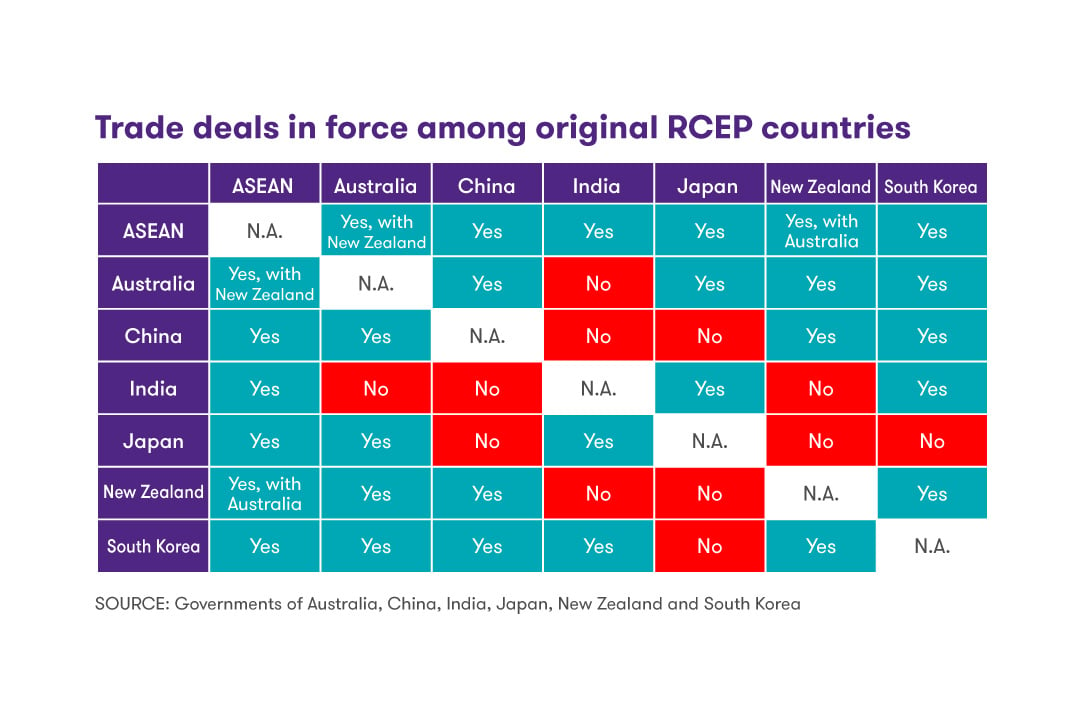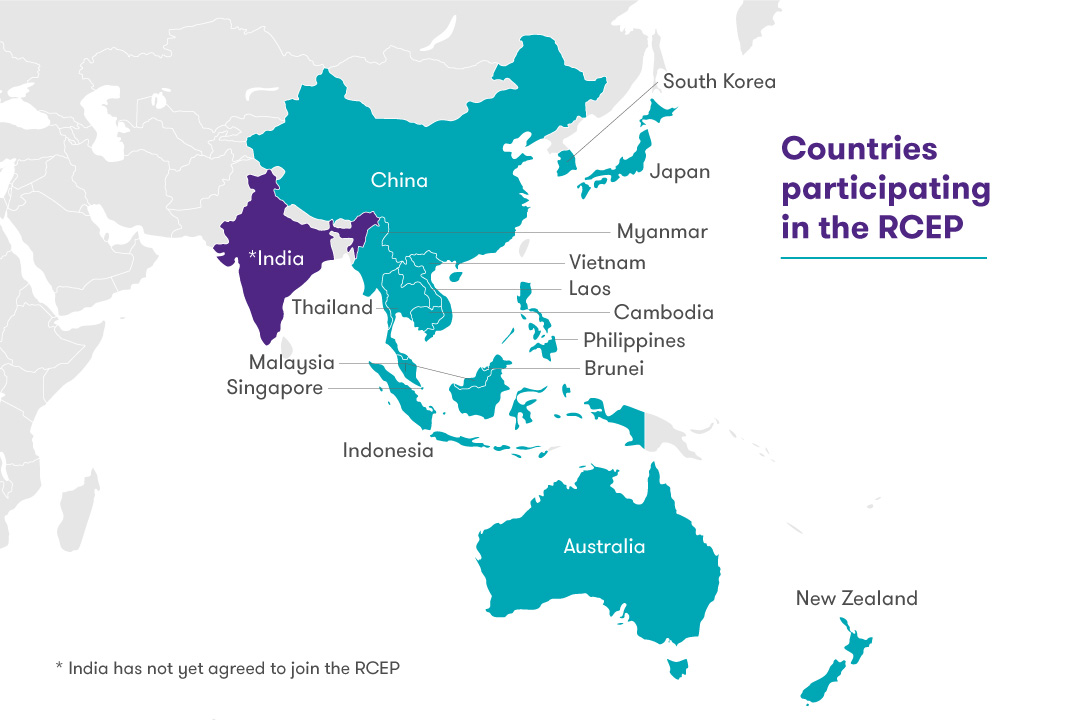-
Internal audit
In today's increasingly competitive and regulated market place, organisations - both public and private - must demonstrate that they have adequate controls and safeguards in place. The availability of qualified internal audit resources is a common challenge for many organisations.
-
IFRS
At Grant Thornton, our International Financial Reporting Standards (IFRS) advisers can help you navigate the complexity of financial reporting so you can focus your time and effort on running your business.
-
Audit quality monitoring
Having a robust process of quality control is one of the most effective ways to guarantee we deliver high-quality services to our clients.
-
Global audit technology
We apply our global audit methodology through an integrated set of software tools known as the Voyager suite.
-
Looking for permanent staff
Grant Thornton's executive recruitment is the real executive search and headhunting firms in Thailand.
-
Looking for interim executives
Interim executives are fixed-term-contract employees. Grant Thornton's specialist Executive Recruitment team can help you meet your interim executive needs
-
Looking for permanent or interim job
You may be in another job already but are willing to consider a career move should the right position at the right company become available. Or you may not be working at the moment and would like to hear from us when a relevant job comes up.
-
Practice areas
We provide retained recruitment services to multinational, Thai and Japanese organisations that are looking to fill management positions and senior level roles in Thailand.
-
Submit your resume
Executive recruitment portal
-
Update your resume
Executive recruitment portal
-
Available positions
Available positions for executive recruitment portal
-
General intelligence assessments
The Applied Reasoning Test (ART) is a general intelligence assessment that enables you to assess the level of verbal, numerical reasoning and problem solving capabilities of job candidates in a reliable and job-related manner.
-
Candidate background checks
We provide background checks and employee screening services to help our clients keep their organisation safe and profitable by protecting against the numerous pitfalls caused by unqualified, unethical, dangerous or criminal employees.

-
Capital markets
If you’re buying or selling financial securities, you want corporate finance specialists experienced in international capital markets on your side.
-
Corporate simplification
Corporate simplification
-
Expert witness
Expert witness
-
Family office services
Family office services
-
Financial models
Financial models
-
Forensic Advisory
Investigations
-
Independent business review
Does your company need a health check? Grant Thornton’s expert team can help you get to the heart of your issues to drive sustainable growth.
-
Mergers & acquisitions
Mergers & acquisitions
-
Operational advisory
Grant Thornton’s operational advisory specialists can help you realise your full potential for growth.
-
Raising finance
Raising finance
-
Restructuring & Reorganisation
Grant Thornton can help with financial restructuring and turnaround projects, including managing stakeholders and developing platforms for growth.
-
Risk management
Risk management
-
Technology & Digital Services
Technology Services
-
Transaction advisory
Transaction advisory
-
Valuations
Valuations
-
Human Capital Consulting
From time to time, companies find themselves looking for temporary accounting resources. Often this is because of staff leaving, pressures at month-end and quarter-end, or specific short-term projects the company is undertaking.
-
Strategy & Business Model
Strategy & Business Model
-
Process Optimisation & Finance Transformation
Process Optimisation & Finance Transformation
-
System & Technology
System & Technology
-
Digital Transformation
Digital Transformation
-
International tax
With experts working in more than 130 countries, Grant Thornton can help you navigate complex tax laws across multiple jurisdictions.
-
Licensing and incentives application services
Licensing and incentives application services
-
Transfer pricing
If your company operates in more than one country, transfer pricing affects you. Grant Thornton’s experts can help you manage this complex and critical area.
-
Global mobility services
Employing foreign people in Australia, or sending Australian people offshore, both add complexity to your tax obligations and benefits – and we can guide you through them.
-
Tax compliance and tax due diligence review services
Tax compliance
-
Value-Added Tax
Value-Added Tax
-
Customs and Trade
Customs and Trade
-
Service Line
グラントソントン・タイランド サービスライン
-
Business Process Outsourcing
Companies, large and small, need to focus on core activities. Still, non-core activities are important, and they need to be leaner and more efficient than most companies can make them sustainably. For Grant Thornton, your non-core activities are our core business. Grant Thornton’s experienced outsourcing team helps companies ensure resilience, improve performance, manage costs, and enhance agility in resourcing and skills. Who better to do this than an organisation with 73,000 accountants? At Grant Thornton we recognise that that outsourcing your F&A functions is a strategic decision and an extension of your brand. This means we take your business as seriously as we take our own.
-
Technology and Robotics
We provide practical digital transformation solutions anchored in business issues and opportunities. Our approach is not from technology but from business. We are particularly adept at assessing and implementing fast and iterative digital interventions which can drive high value in low complex environments. Using digital solutions, we help clients create new business value, drive efficiencies in existing processes and prepare for strategic events like mergers. We implement solutions to refresh value and create sustainable change. Our solutions help clients drive better and more insightful decisions through analytics, automate processes and make the most of artificial intelligence and machine learning. Wherever possible we will leverage your existing technologies as our interest is in solving your business problems – not in selling you more software and hardware.
-
Technical Accounting Solutions
The finance function is an essential part of the organisation and chief financial officer (CFO) being the leader has the responsibility to ensure financial discipline, compliance, and internal controls. As the finance function is critical in every phase of a company’s growth, the CFO role also demands attention in defining business strategy, mitigating risks, and mentoring the leadership. We offer technical accounting services to finance leaders to help them navigate complex financial and regulatory environments, such as financial reporting and accounting standards, managing compliance requirements, and event-based accounting such as dissolutions, mergers and acquisitions.
-
Accounting Services
Whether you are a local Thai company or a multinational company with a branch or head office in Thailand you are obliged to keep accounts and arrange for a qualified bookkeeper to keep and prepare accounts in accordance with accounting standards. This can be time consuming and even a little dauting making sure you conform with all the regulatory requirements in Thailand and using Thai language. We offer you complete peace of mind by looking after all your statutory accounting requirements. You will have a single point of contact to work with in our team who will be responsible for your accounts – no matter small or large. We also have one of the largest teams of Xero Certified Advisors in Thailand ensuring your accounts are maintained in a cloud-based system that you have access to too.
-
Staff Augmentation
We offer Staff Augmentation services where our staff, under the direction and supervision of the company’s officers, perform accounting and accounting-related work.
-
Payroll Services
More and more companies are beginning to realize the benefits of outsourcing their noncore activities, and the first to be outsourced is usually the payroll function. Payroll is easy to carve out from the rest of the business since it is usually independent of the other activities or functions within the Accounting Department. At Grant Thornton employees can gain access to their salary information and statutory filings through a specialised App on their phone. This cuts down dramatically on requests to HR for information by the employees and increases employee satisfaction. We also have an optional leave approval app too if required.
-
 IBR Optimism of Thailand Mid-Market Leaders Suggests Potential Underestimation of Challenges Ahead: International Business Report, Q1 2024Bangkok, Thailand, April 2024 — The Grant Thornton International Business Report (IBR) for Q1 2024 unveils a strikingly optimistic outlook among Thailand's mid-market business leaders, juxtaposed with the looming challenges that will shape the nation's economic future. With a Business Health Index score of 13.5, Thailand outperforms its ASEAN, Asia-Pacific, and global counterparts, signaling a robust confidence that may overshadow critical issues such as demographic changes, skills shortages, and the necessity for digital advancement.
IBR Optimism of Thailand Mid-Market Leaders Suggests Potential Underestimation of Challenges Ahead: International Business Report, Q1 2024Bangkok, Thailand, April 2024 — The Grant Thornton International Business Report (IBR) for Q1 2024 unveils a strikingly optimistic outlook among Thailand's mid-market business leaders, juxtaposed with the looming challenges that will shape the nation's economic future. With a Business Health Index score of 13.5, Thailand outperforms its ASEAN, Asia-Pacific, and global counterparts, signaling a robust confidence that may overshadow critical issues such as demographic changes, skills shortages, and the necessity for digital advancement. -
 Workshop Corporate Strategy and Company Health Check WorkshopThroughout this workshop, we will delve into the life cycle of companies, examining the stages of growth, maturity, and adaptation. Our focus will extend to the current business environment, where your Company stands today, and how our evolving strategy aligns with the ever-changing market dynamics.
Workshop Corporate Strategy and Company Health Check WorkshopThroughout this workshop, we will delve into the life cycle of companies, examining the stages of growth, maturity, and adaptation. Our focus will extend to the current business environment, where your Company stands today, and how our evolving strategy aligns with the ever-changing market dynamics. -
 Tax and Legal update 1/2024 Introducing the New “Easy E-Receipt” Tax scheme with up to THB 50,000 in Tax DeductionsThe Revenue Department has introduced the latest tax scheme, the “Easy E-Receipt”, formerly known as “Shop Dee Mee Kuen”. This scheme is designed to offer individuals tax deductions in 2024.
Tax and Legal update 1/2024 Introducing the New “Easy E-Receipt” Tax scheme with up to THB 50,000 in Tax DeductionsThe Revenue Department has introduced the latest tax scheme, the “Easy E-Receipt”, formerly known as “Shop Dee Mee Kuen”. This scheme is designed to offer individuals tax deductions in 2024. -
 TAX AND LEGAL Complying with the PDPA – A Balancing ActOrganisations must be aware of the circumstances in which they are allowed to collect data to comply with Thailand’s Personal Data Protection Act.
TAX AND LEGAL Complying with the PDPA – A Balancing ActOrganisations must be aware of the circumstances in which they are allowed to collect data to comply with Thailand’s Personal Data Protection Act.
Following over 6 years of negotiation, a deal was finally made in Bangkok at the 35th ASEAN Summit this past November. ASEAN leaders successfully reached an accord with 5 of their major trading partners, paving the way for the start of the long-awaited Regional Comprehensive Economic Partnership (RCEP) agreement.
The RCEP was originally conceived of as a regional trading bloc which would include 10 ASEAN countries as well as 6 countries in the Asia-Pacific region: Australia, China, India, Japan, New Zealand and South Korea. With the exception of India, which abstained from partaking in the finalised RCEP, the remaining 15 participating countries have agreed to submit the RCEP agreement through their respective domestic legislative processes for endorsement within 2020.
Despite India’s abstention, members of RCEP have expressed their resolve to work out a satisfactory arrangement for India’s participation. However, it is still up to India to determine whether it will join the RCEP.
The Significance of the RCEP
Even without India, the RCEP remains economically and geopolitically significant. Economically, it is the third largest global trading bloc behind the European Union and the former North American Free Trade Agreement (“NAFTA”, now renegotiated and referred to as the “USMCA”). The RCEP, if viewed as a single market, has a combined GDP of over 24.2 trillion USD, almost one-third of global GDP. RCEP nations are also home to over 2.3 billion people, roughly 30 percent of the global population.
On the Asia-Pacific front, the RCEP is now the largest trading bloc. The driving force which gives the RCEP so much economic clout is the participation of China and Japan; two of the world’s largest economies behind the United States. Though the finalised text of the RCEP is yet to be released, it is expected to introduce progressive reduction and elimination of tariffs on goods trade within the bloc, along with standardisation of export documents.
Though most of the RCEP members already have some form of bilateral or multilateral trade agreements with one another, the RCEP is expected to “seal off” remaining gaps amongst members – thereby creating a path towards a single goods and services trading market for the region.
 Credit: CNBC.
Credit: CNBC.
From a geopolitical perspective, RCEP members cover almost the entire eastern crescent of the Pacific rim – starting with Japan in the north and sweeping down through Korea, China, and South East Asia, with Australia and New Zealand in the southern hemisphere. Should India ever join the RCEP, the RCEP will also cover part of Central Asia as well.
While the RCEP does not include political components, it will serve as an economic anchor to supplement China’s Belt and Road initiative, as well as the country’s growing influence in the region. Such a development would dilute the political effect of the CPTPP, a trade agreement which excluded China. The CPTPP was formerly part of the United States’ “Pivot to Asia” foreign policy under the Trans-Pacific Partnership (“TPP”) initiative. With the United States abandoning the TPP in 2017 and succession of a less economically potent CPTPP, the RCEP thus represents, for the time being, a win for China.
RCEP countries

What about the CPTPP?
The CPTPP will continue to be a relevant free trade agreement. It is notable that memberships in the CPTPP and RCEP are not mutually exclusive. Seven countries, including Japan and Australia, are parties to both trade agreements. Thus, prospective RCEP members such as Thailand are not precluded from entering into negotiations to join the CPTPP.
While the RCEP outclasses the CPTPP in terms of market size, the CPTPP has greater substantive depth. The Economist noted that the CPTPP offers greater reductions in tariffs and is more extensive in the scope of its legal instruments. For example, the CPTPP contains provisions on intellectual property, environment, and labour protection, all which the RCEP lacks. The absence of such ancillary provisions might deter additional developed economies, with stringent regulatory requirements, from joining the RCEP. The RCEP’s lack of regulatory depth may also impede the trade agreement’s continuing relevancy; the RCEP is less capable of addressing the future qualitative needs of Asia’s maturing economies. Furthermore, if the United States changes its stance and elects to join the CPTPP, then the CPTPP may rival the RCEP in economic and geopolitical gravity.
Quick facts on RCEP vs CPTPP
RCEP (Including India)
Member States: 16 members
Combined GDP of over 27 trillion USD (32% of global GDP in 2018)
Combined trade of over 10 trillion USD (30% of global trade in goods in 2017)
Market size of over 3.6 billion people (47% of global population)
RCEP (excluding India)
Member States: 15 members
Combined GDP of over 24.2 trillion USD (28% of global GDP in 2018)
Combined trade of 9.5 trillion USD (28% of global trade in goods in 2017)
Market size of over 2.3 billion people (30% of global population)
CPTPP
Member States: 11 members
Combined GDP of 13.5 trillion USD (16% of global GDP in 2018)
Combined trade of 5 trillion USD (15% of global trade in goods in 2017)
Market size of 495 million people (6.5% of global population)
Sources: World Bank statistics on trade and GDP; United States Census Bureau on world population.
Will India Join?
In their joint statement issued at the ASEAN Summit, RCEP member states expressed a resolve to iron out issues raised by India on the trade agreement. Nonetheless, this author remains skeptical that India will join the RCEP in the near future.
The trade dynamics between India and RCEP members are not in India’s favour. Foreign Policy reports that India has the largest trade deficit among the 16 original RCEP countries – a deficit created by its current trade relationships with 11 of the other RCEP members. India’s imports outweigh exports by 149.6 billion USD, accounting for more than 20% of the country’s total trade value – an amount that is over 50% higher than its total exports. Much of this deficit comes from trade with China. Ascending to the RCEP would require India to immediately eliminate tariffs on over a quarter of its imports. As a result, India would see its deficit widen upon entry into the RCEP.
It could be argued that over time, India’s economy could stand to benefit from access to RCEP markets and greater economic integration with the region. Such a forecast, however, would be speculative and theoretical – and India’s government would have difficulty selling the RCEP to its citizens on such vague promises. Until India resolves its own trade deficit issues, joining the RCEP might be a difficult prospect.
Citations and resources:
https://foreignpolicy.com/2019/11/19/modi-pull-out-rcep-india-manufacturers-compete-china/
http://www.eiu.com/industry/article/608652844/all-set-for-rcep/2019-11-06
https://www.asean2019.go.th/wp-content/uploads/2019/11/204d66d045df586db557d291cf045cb8.pdf
https://wits.worldbank.org/countrysnapshot/en/WLD
https://fingfx.thomsonreuters.com/gfx/rngs/APEC-SUMMIT/010030LT1BE/index.html


